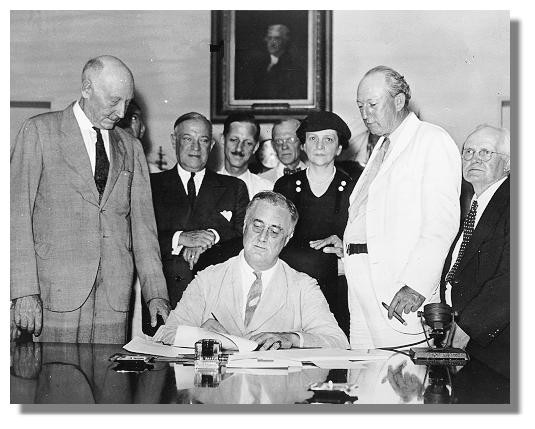Retirement Insecurity A Problem that Needs a Solution (so here s one! )
Post on: 30 Март, 2015 No Comment

March 18th, 2012 at 12:55 am
I’ve been remiss. While I’ve written a fair bit on Social Security, I’ve not paid enough attention to other dimensions of retirement security, in particular, pension reform.
I was reminded of this omission upon reading this great oped by one of my favorite pension experts, Teresa Ghilarducci (hey, some folks have favorite ballplayers, others have favorite pension experts).
Here’s the basic lay of this troubled landscape: First, based on long-term wage erosion, low savings, and the shift from defined benefit (DB) pensions to defined contribution pension plans (DC)—see figure—there are a lot fewer people who will reliably be able to replace enough of their lost earnings when they retire. DB plans guarantee a pension benefit; DC plans are individual retirement accounts that fluctuate with the markets; thus, the figure shows the locus of risk in retirement security shifting from employers to workers.
Source: Economic Policy Institute
Second, some pension plans held by public workers—and thus a liability for their public sponsors, like municipal governments—are in trouble, often due to a collision of irresponsible funding practices and the Great Recession. Though cases facing potential defaults dominate the headlines—including today’s —they are the exception . Yes, there exists a serious funding shortfall in many public plans, but no, that doesn’t imply the need for massive restructuring, benefits cuts, and defaults. In fact, on average, states, cities, and towns devote less than 5% of their operating budgets to funding their pensions.
Moreover, most—not all—have time to fix the problem through funding increases, along with some sensible eligibility and benefit reductions (from the CBPP link above):
As Alicia Munnell, an expert on these matters who directs the Center for Retirement Research at Boston College, has explained, “even after the worst market crash in decades, state and local plans do not face an immediate liquidity crisis; most plans will be able to cover benefit payments for the next 15-20 years.”
A far bigger problem is the fact that too few of today’s workers have any sort of pension at all. Half of private sector workers do not participate in any retirement savings plans, and as you’d expect, participation is a function of your wage level. For low-wage workers—those in the bottom 25% of the wage scale—20% participate in plans; for those in the top 25%, it’s 75%.
That’s how you get findings like these from Teresa G (that’s what she’s called in her music videos):
…over a third of New York workers, both public and private, approaching retirement age have less than $10,000 in liquid assets. As a result, those workers are projected to be poor or near poor in retirement, with an average budget of about $7 a day for food and approximately $600 a month for housing.
So scholars and advocates are thinking about ways to cover a lot more people, and a bit of a consensus is forming around a hybrid between DBs and DCs that involves pooling over large numbers of workers—as with health care reform, pooling risk is the best way to dilute it. Here’s the way something like this might work:
state or federal governments would set up public pension plans that guaranteed a modest return—more of a supplement to Social Security than a DB replacement (as the latter could place new, large liabilities on the public sector) in which all workers could participate. In other words, the plan would be organized and managed by the state or federal sector, as they have by far the greatest capacity to pool and manage large plans; but any employee, not just public sector workers, could participate.
these city, state, region, or even nation-wide funds would be managed by independent expert boards instructed to meet modest targets through safe investments like index funds and TIPS (inflation-protected bonds).
employers and employees could make tax free contributions to these pension plans, just as with today’s IRAs or employer-provided DC plans. The plan would be fully funded by employer and employee contributions and thus not backstopped by a government guarantee.

Why go there? What’s the advantage to this kind of plan? First, with its large participation base and not-for-profit management structure, fees would be very low relative to the current DC system. Second, this could be set up as an opt-out system, where employees would automatically contribute (pretax) some small portion of their paycheck unless they actively choose to opt out. Behavioral research has shown that lots of folks who want and would benefit from a plan like this often won’t sign up based on simple inertia. But if they’re put in automatically, they’ll stay in.
What are the downside risks? Private DC providers won’t like the competition but they’ll still be able to offer plans that are much more aggressive than this public option. Problem is, there’s a real market failure here. The way things are currently set up, the marketplace just isn’t providing future retirees with affordable options.
Social Security, of course, addresses that market failure, but with an average benefit of under$15K per year, it’s a partial solution. The retirement stool has always been conceived of as having three legs: Social Security, savings, and pensions. It’s the loss of the latter two that militate the need for a broad, inclusive solution of the type suggested above.
The biggest objections I’ve heard are twofold. First, such retirement products as a large public plan like this would offer are already available—you can already build your own retirement account (tax-free, through IRAs) in index funds or inflation-protected bonds. But it’s neither cheap nor easy for folks to do so, which is why, in reality, you see so many middle and low-wage earners without any pension plan at all. This ideamore of a cheap delivery mechanism, reallyshould make it cheap and easy to have a pension through work.
The more serious objection is that, like the GSE’s (Fannie and Freddie), a plan set up by the government, even one that’s pre-funded by workers and employer contributions and run by private entities, would implicitly be backstopped by the government. If it got into trouble, it would be “too big to fail,” and thus to create it is to invoke bailout liability.
One way to solve this would be to have the guaranteed return be variable within a given range, so that when the fund was stressed, say in the midst of a financial meltdown, it would pay out less (that would make it more of a hybrid than a true DB plan).
But the bottom line here is that unless we as a society are willing to accept vastly increased economic insecurity in retirement, we can’t afford to sit on our hands, cast aspersions at public sector pensions, and argue that it’s a you’re-on-your-own world, where you bear all the risk. I think it’s fair to assert that in the world’s richest, most advanced economy, our retiree generation is also too big to fail.
Share the post Retirement Insecurity: A Problem that Needs a Solution (so heres one!)














